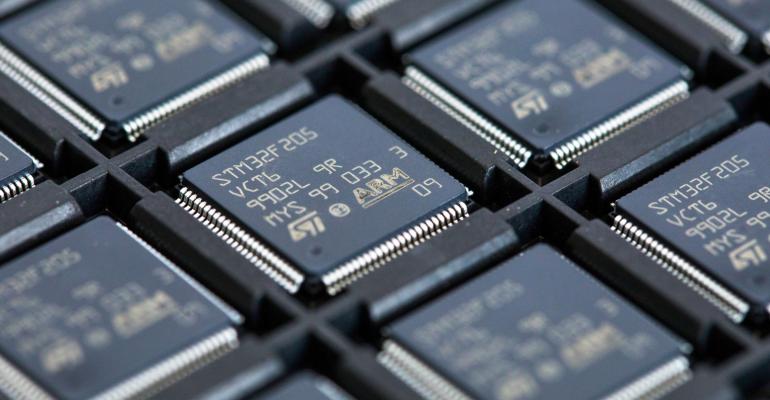(Bloomberg) -- Qualcomm Inc., NXP Semiconductors NV and other chipmakers are forming a new company to hasten the development of RISC-V, a standard that could challenge the near-ubiquitous technology of Arm Ltd.
Together with Nordic Semiconductor ASA and German companies Robert Bosch GmbH and Infineon Technologies AG, the semiconductor makers will invest jointly in a new business to promote the RISC-V architecture for chip design, according to a statement Friday.
The move threatens to draw new battle lines in the semiconductor industry. Underpinning the effort is concern among global chipmakers about overreliance on SoftBank Group Corp.’s Arm technology, which is standard across smartphones and expanding rapidly into larger devices, data centers and the automotive industry. Arm helps provide the blueprints for chips such as Qualcomm’s and is seeking an initial public offering at a valuation of $60 billion as soon as next month.
“An open collaboration with like-minded companies to continually enhance innovative RISC-V microprocessor IP and ensure a robust and reliable supply of the technology is the ideal answer,” Svein-Egil Nielsen, chief technology officer of Nordic Semiconductor, said in the statement.
Initially, the companies will focus on automotive applications, and the as-yet-unnamed business will be formed in Germany, home to Volkswagen AG and other titans of the car industry. Over time, the new company will expand to address mobile and so-called Internet of Things chips.
The jointly funded company will be an advocate among industry associations and government bodies for the standardization and accelerated development of RISC-V technologies. It’s envisioned to become a single source to enable compatibility among products, provide reference architectures and establish widely used standards.
RISC-V is an open-source standard for chips, which proponents are hoping will replace proprietary technology in part of the semiconductor design phase. That would theoretically make the technology cheaper and more accessible.
The standard is still relatively nascent — and it’s not clear how much money may go toward the effort — but it’s gaining ground. Chipmakers are looking for alternatives to Arm, which provides the design architecture for most companies in the industry. Despite Arm’s low profile among consumers, its technology underpins many of the world’s most critical chips.
Other large semiconductor makers, including Intel Corp., have said they’ll support the development of RISC-V chips in the future. That could bring further momentum to the movement.
Qualcomm, meanwhile, is in a legal dispute over the use of Arm’s designs in higher-end processors. That’s pitted the SoftBank division against one of its biggest customers. Qualcomm makes processors for the smartphone market, and its chips are as pervasive in that industry as Arm’s technology.
Qualcomm was also among the backers that invested $175 million last year in chip startup SiFive Inc., which is designing chips based on RISC-V architecture. That company is focused on creating more complex designs with the standard, which would be more of a threat to Arm.
So far, though, no one has fielded the kind of high-end RISC-V based chip that would rival the best Arm-based products. In addition to the lengthy design and production of such products, software plays a huge role in adoption — and Arm is the de facto standard in that area.
It took the Cambridge, England-based company decades to build the level of adoption it currently enjoys and would take a rival effort many years to displace it.





